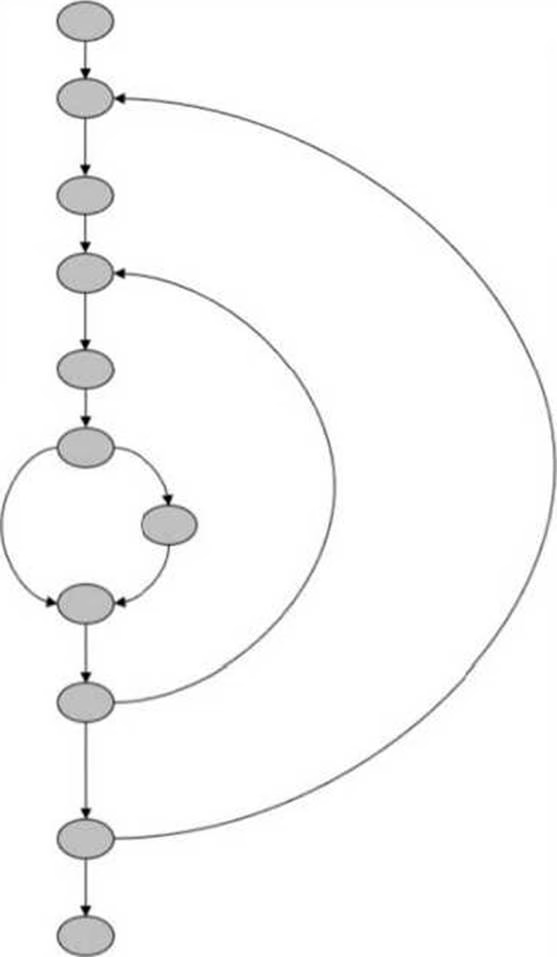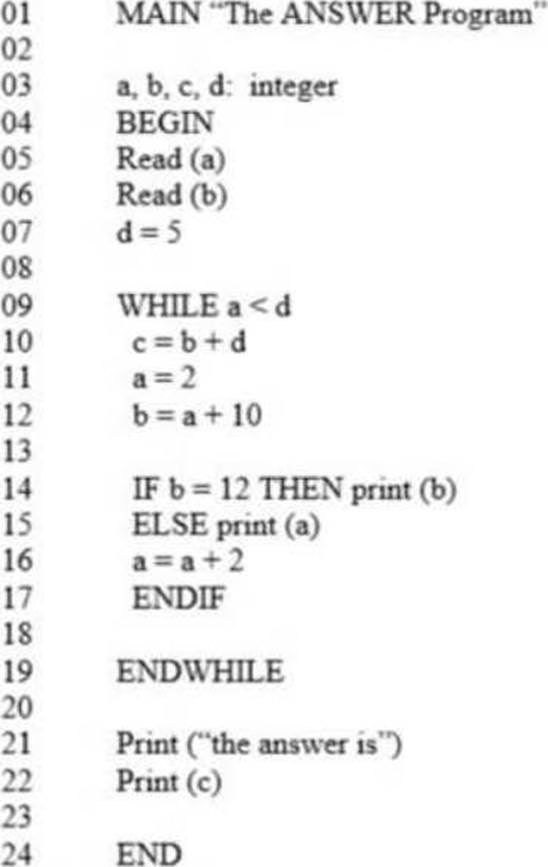ISTQB CTAL-TTA ISTQB Advanced Level Technical Test Analyst (CTAL-TTA) Online Training
ISTQB CTAL-TTA Online Training
The questions for CTAL-TTA were last updated at Dec 17,2025.
- Exam Code: CTAL-TTA
- Exam Name: ISTQB Advanced Level Technical Test Analyst (CTAL-TTA)
- Certification Provider: ISTQB
- Latest update: Dec 17,2025
At which test level would reliability testing most likely be performed?
- A . Static testing
- B . Component testing
- C . System testing
- D . Functional acceptance testing
Consider the following control flow graph:

The control flow represents a software component of a car navigation system. Within the project the maximum cyclomatic complexity to be allowed is set at 5.
Which of the following statements is correct?
- A . No defect needs to be reported since the cyclomatic complexity of the component is calculated at 3.
- B . No defect needs to be reported since the cyclomatic complexity of the component is calculated at 4
- C . No defect needs to be reported since the cyclomatic complexity of the component is calculated at 5.
- D . A defect needs to be reported since the cyclomatic complexity of the component is calculated at 6.
Consider the pseudo code for the Answer program:

Which of the following statements about the Answer program BEST describes the control flow anomalies to be found in the program?
- A . The Answer program contains no control flow anomalies.
- B . The Answer program contains unreachable code.
- C . The Answer program contains unreachable code and an infinite loop.
- D . The Answer program contains an infinite loop.
Which of the following statements about fault seeding tools is correct?
- A . Fault seeding tools insert defects into the source code to check the effectiveness of testing.
- B . Fault seeding tools insert defects into the source code to test the input checking capabilities of the software.
- C . Fault seeding tools insert defects into the source code to support the application of specification-based test design techniques.
- D . Fault seeding tools insert defects into the source code to check the level of maintainability of the software.
As a technical test analyst, you are involved in a risk analysis session using the Failure Mode and Effect Analysis technique. You are calculating risk priorities.
Which of the following are the major factors in this exercise?
- A . Severity and priority
- B . Functionality, reliability, usability, maintainability, efficiency and portability
- C . Likelihood and impact
- D . Financial damage, frequency of use and external visibility
Which option correctly states the sequence of tasks to be undertaken when re-factoring test cases? SELECT ONE OPTION
- A . Evaluate, Identification, Analysis. Re-run, Refactor
- B . Analysis, Identification, Re-run, Refactor, Evaluate
- C . Identification, Evaluate, Analysis, Refactor, Re-run
- D . Identification, Analysis, Refactor, Re-run, Evaluate
An enhancement to a Social Media application allows for the creation of new Groups. Any number of existing application members can be added to a Group. An attempt to add a non-existent member of the application to a Group will result in an error, as will an attempt to add the same member twice.
Members can be removed from an existing Group. An existing Group can be deleted but only if there are no current members attached to it.
Which one of the following Keyword-driven input tables provides the BEST test coverage of this
enhancement?
Table 1
Keyword Group Id Member Id
Create.Group Group3
Add_Member Group3 @Member1
Result
Group created
Member added to Group
Member added to Group
Error – Group not empty
Member removed from group
Member removed from group
Group deleted
- A . Table 4
- B . Table 3
- C . Table 1
- D . Table 2
Why could test cases need to be refactored in an Agile project?
SELECT ONE OPTION
- A . To maintain bi-directional traceability with the user stories
- B . To increase the breadth of black box coverage
- C . To make them easier to understand and cheaper to modify
- D . To ensure that the tests and code remained aligned
Your Agile team is developing a web-based system that will allow users to browse and buy online from a store’s shopping catalogue. Continuous Integration has been implemented and technically it is working well, running several times per day, but each run is taking almost as much time as the team is prepared to allow. It is clear that after a few more iterations, as the number of tests needed grows with the product, it will be taking too much time.
Which of the four options contains a pair of solutions that will BOTH help to solve this problem?
a) Only include unit and component integration tests in the automated Cl runs.
b) Schedule low priority tests to be the first ones executed in each run, in order to provide rapid build verification.
c) Reduce the extent to which the automated tests go through the user interface, using technical interfaces instead.
d) Reduce the number of Cl cycles run each day.
e) Select a subset of automated tests for the daytime Cl runs, and run as many of the other tests as possible in an overnight cycle.
- A . d and e
- B . b and d
- C . c and e
- D . a and c
Which statement is correct regarding the use of exploratory testing for safety critical systems?
- A . It should be used when black-box tests cannot be automated
- B . It is highly recommended for all risk levels
- C . It is not recommended, as manual black-box tests should be used instead
- D . It is highly recommended for low risk levels only
Latest CTAL-TTA Dumps Valid Version with 65 Q&As
Latest And Valid Q&A | Instant Download | Once Fail, Full Refund

